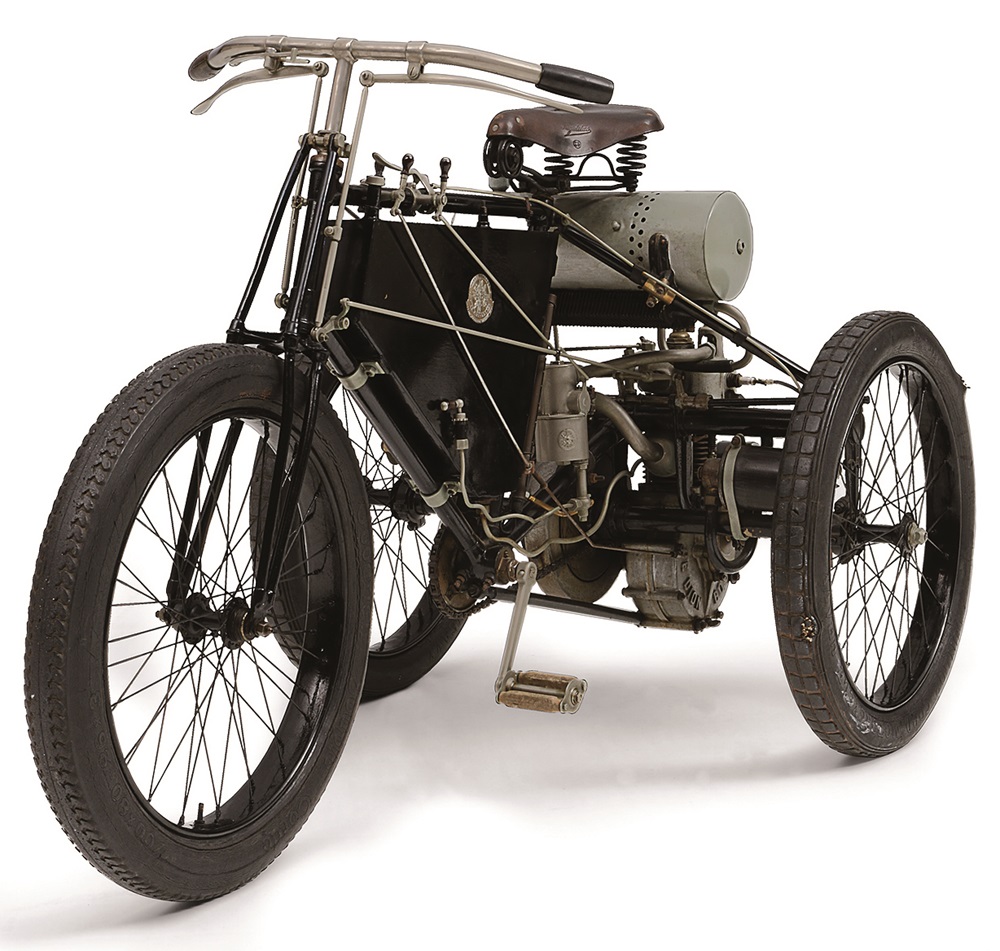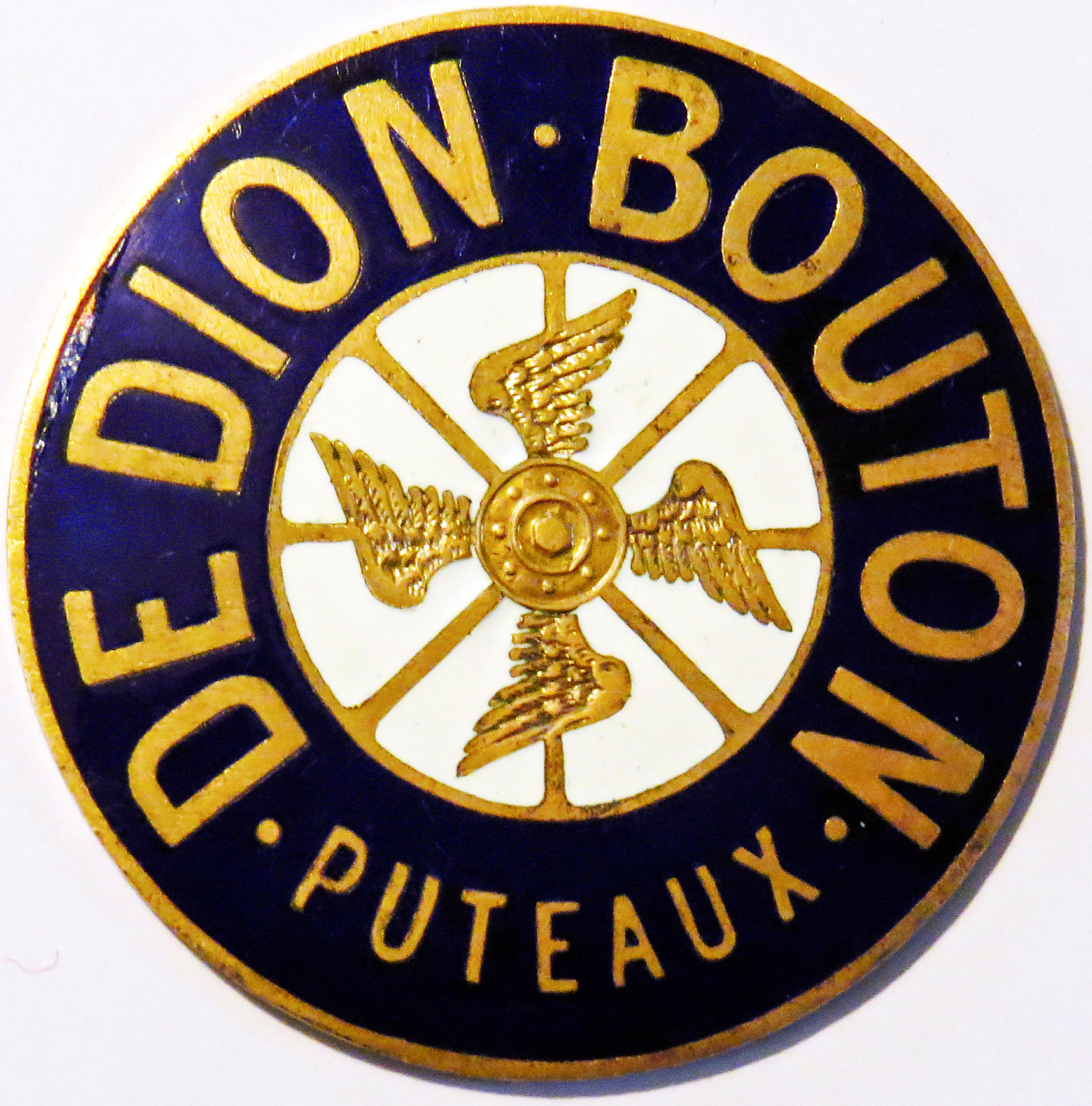1900 De Dion-Bouton Tricycle

The descriptions of the Classic Cars in the Directory were partly generated or supplemented with the help of artificial intelligence (AI). The content may occasionally not always be entirely accurate or factually correct despite careful checking.
The De Dion-Bouton Tricycle 1900 is a classic example of a three-wheeled, motorized vehicle that was built in the early days of the automotive industry. It was the first motorized tricycle to be mass-produced, and it quickly became a popular choice for people who wanted a reliable and practical means of transportation.
The De Dion-Bouton Tricycle 1900 was powered by a single-cylinder, four-stroke engine, which was mounted in front of the driver. The engine had a displacement of 402cc and produced around 3 horsepower, which was enough to propel the tricycle to a top speed of 25-30 mph. The engine was connected to the rear wheel via a simple chain drive, which provided direct power transfer and minimal power loss.
The tricycle had a simple, yet effective suspension system that consisted of a leaf spring located under the driver's seat. This helped to absorb shocks and bumps from the road, and it provided a comfortable ride over rough terrain. The rear wheel was also fitted with a brake, which was operated by a hand lever located on the handlebars.
The De Dion-Bouton Tricycle 1900 had a basic steering system that was typical of tricycles of the time. The driver sat on a seat that was mounted directly above the front wheel, and he or she steered the tricycle by twisting the handlebars. This caused the front wheel to turn, and the tricycle would then follow the direction of the handlebars.
The tricycle had a basic, yet functional design that was typical of early motorized vehicles. It featured a canvas-covered wooden body, which provided some protection from the elements, and a simple, yet comfortable seat. The driver sat in an upright position, which provided good visibility and control over the tricycle.
Overall, the De Dion-Bouton Tricycle 1900 was a simple, yet effective motorized vehicle that was well-suited to the needs of its time. It provided a reliable means of transportation for people who needed to travel short distances quickly, and it helped to pave the way for the development of more sophisticated motorized vehicles in the future.
Milestones
- De Dion-Bouton Tricycle was first introduced in 1895 - In 1900, the tricycle was one of the most popular models produced by De Dion-Bouton - It was powered by a single-cylinder engine with a displacement of 211cc - The tricycle had a top speed of around 25-30mph - The De Dion-Bouton Tricycle was known for its reliability and durability, making it a popular choice for consumers at the time - The design included a front-mounted fuel tank and a wooden body with steel frame - The tricycle featured an innovative hot-tube ignition system, which was a significant improvement over other ignition systems of the time - In 1900, the De Dion-Bouton Tricycle won the first-ever Gordon Bennett Cup race for motorized vehicles, solidifying its reputation as a reliable and high-performance vehicle.Technical
- Engine: A single-cylinder, air-cooled engine with a displacement of 600cc - Power output: 4 horsepower at 1,000 rpm - Transmission: Belt-driven transmission with two-speeds - Suspension: De Dion rear suspension with leaf springs and coil springs for the front suspension - Brakes: Foot-operated drum brake at the rear wheel - Fuel system: Gravity-fed carburetor with a fuel tank capacity of 5 liters - Ignition: Magneto ignition system with contact breaker - Wheels: Two solid rubber tires with wire-spoked wooden wheels at the front and a wire-spoked cast-iron wheel at the rear - Steering: Rack and pinion steering with a single handlebar for control - Top speed: 30-35 km/h (18-22 mph) depending on road conditions and terrain.